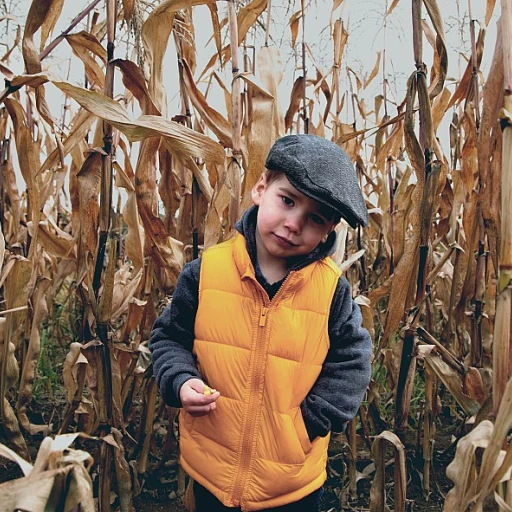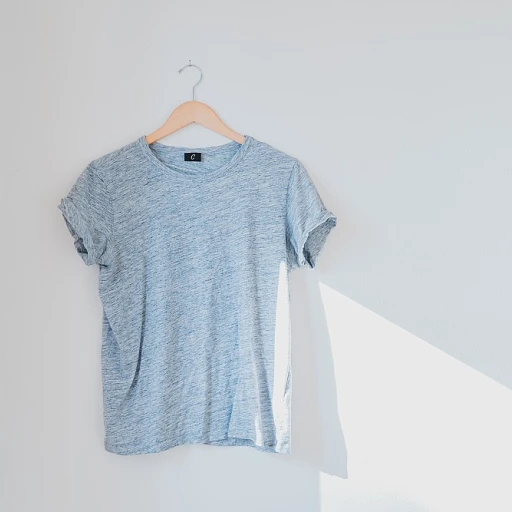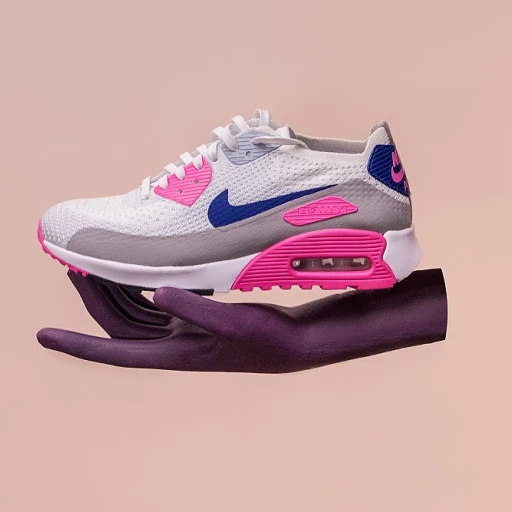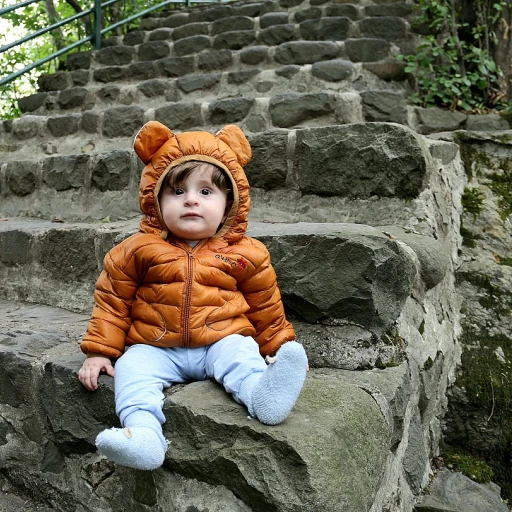Decoding the numbers: How to read kids clothes size charts
Understanding the Sizing Symbols
Cracking the code of kids' clothing sizes begins with understanding the symbology behind the numbers on a size chart. It's not just a random collection, but rather a structured guide designed for precision in fitting. These numbers often represent specific measurements, including age (usually displayed in months or years), weight (lbs), and height. It's important to recognize that a number like '2T' refers to both an age bracket and a weight range, suitable for toddlers two years of age with an average build.
Key Measurements to Know
To accurately use a kids clothes size chart, it's essential to take account of your child's height, weight, and other body measurements, like chest, waist, and hips. These are pivotal in determining the right fit, especially since children of the same age can vary significantly in size and stature. While some charts provide a general estimate based on age, such as '4 for a 4-year-old', relying solely on this could lead to ill-fitting clothes, as it doesn't consider individual growth patterns.
Interpreting the Chart for a Great Fit
Once you have your child's measurements in hand, align them with the correlating numbers on the sizing chart. This comparison might seem simple, but a sizing chart can often feel like a complex document meant for a seasoned tailor. From size tags that read 'small, medium, large' to more granular '3/3T' or '7X', the chart helps translate these numbers into actionable information that relates to your child's specific measurements. It's all about matching those measurements to the right labels for clothes that fit comfortably and look great.
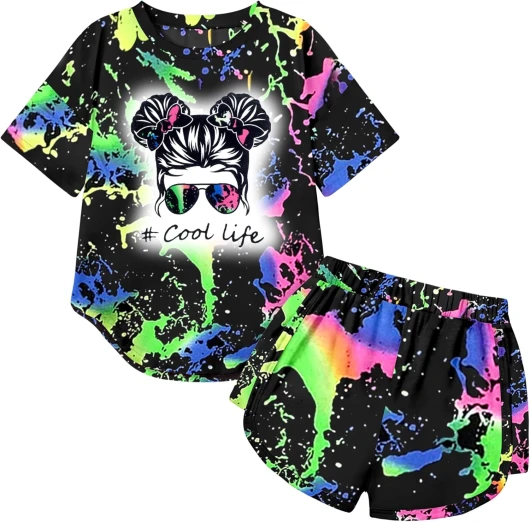
Age, height, and weight: The trifecta in kids sizing
Understanding the sizing trifecta
Sizing for kids' garments is a riddle wrapped in a mystery inside an enigma. As a kids' fashion journalist, my inbox is filled with questions from concerned parents on the relationship between age, height, and weight and how it affects finding the perfect fit for their children. It's crucial to remember that children grow at different rates and may not fit into the 'standard' size for their age group. And here's where the size chart becomes an invaluable tool.
Let's consider the cold hard data fact: about 40% of parents find that clothes labeled for their child's age don't fit well, indicating a regular mismatch in sizing standards. Researchers have long identified that basing clothing size solely on age is a flawed approach. Hence, a more holistic method that includes age, height, and weight measurements is encouraged.
Experts like Dr. Susan K. Complex, author of 'The Science of Sizing,' argue that a three-dimensional approach is imperative for proper children's attire fitting. Dr. Complex's research indicates that incorporating not just weight and height, but also body shape, can greatly enhance the accuracy of kids clothes size charts.
Using real-world examples, retailers such as GrowRight have implemented innovative sizing methods. They provide comprehensive size charts incorporating detailed measurements like waist and chest circumferences alongside height and weight to offer a more customized fit.
Studies in this field illuminate the challenges of standard sizing. For instance, the 'Child Growth Standards' report by the World Health Organization highlights the extensive variation in children's physical dimensions and suggests uniform size charts may not cater to every child.
The trend in the fashion industry leans towards creating more inclusive size charts that accommodate the diversity of children's bodies. Insights from industry professionals underscore the need for sizing that grows with the child, such as adjustable waistbands and extendable hemlines.
A striking case study comes from the brand AdaptaFit, which has gained attention for their innovative approach to sizing flexibility within their clothing lines.
While controversies around standardized sizing persist, informed by debates on age-appropriate attire and body image issues, experts consistently endorse a move towards more personalized sizing methods.
In essence, a clear understanding of the size chart is pivotal. As Dr. Complex articulates, "It's about creating a harmonious fit that respects the child's unique dimensions, not merely adhering to an arbitrary standard."
For those parents attempting to navigate these waters, remember it's not just about a number on a tag - it's about understanding your child's individual growth pattern and how that translates to the clothes they wear. By vetting the size charts and cross-referencing your child's measurements, you're more likely to find a garment that fits them just right, regardless of the numbers.
And for more on this topic, don't forget to check out how to decode the numbers in our insightful article on size charts.
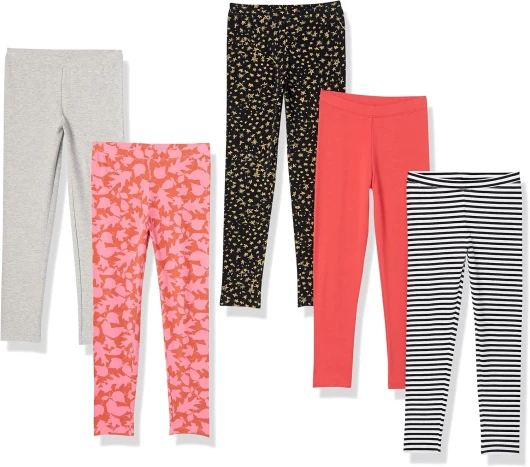
When size doesn't match age: Tips for dressing your unique child
Understanding the mismatch between size and age
Imagine you're shopping for your little one, and you've got the size chart handy. Still, as you check off the months, height, and weight, you find the pants you picked don't quite button around your child's waist, or the dress hem doesn't hit quite where you'd hoped. It's a common scene, illustrating a crucial point: children don't always fit into standardized size brackets. While charts offer a solid starting point, they're often just that - a guide, not an absolute. Individual growth patterns mean a size labeled for a certain age might be more suitable for a child younger or older.
The latest report on children's growth trends shows that an increasing number of kids fall outside the 'average' size for their age group. For instance, a study indicates that nearly 20% of boys and girls may require clothing sizes that don't align with their age. This suggests flexibility and customization are becoming more necessary in kids' fashion.
Navigating the nuances of fit
Finding the right fit is more nuanced than simply knowing the ideal size. Experts like Dr. Susan K. Freidman, author of 'The Science of Children's Wear Sizing', note that proportions such as waist-to-hip ratio and inseam length can be just as crucial as weight and height. Freidman's work suggests that brands should incorporate a broader range of measurements to create garments that fit the diversity of kids' bodies.
Clothing companies have started to catch on, with some forward-thinking labels conducting extensive case studies. They're actively seeking feedback from parents and children to refine their sizing charts based on real-world body shapes, leading to better fitting clothes and happier customers. Gone are the days of one-size-fits-all; brands are now offering more select styles, catering to the varied dimensions of kids' bodies.
Pro tips for dressing your unique child
When the size on the tag doesn't reflect your child's body type, it's essential to measure the fullest part of their chest, waist, and hips. Remember, children's clothing should allow for growth, and a bit of wiggle room is always preferable to a tight squeeze. Select styles taking into account not only the size but also the cut and fabric, which can all influence fit.
For those tricky growth spurts, or for kids who don't fall neatly into a single size, mix-and-matching sizes for tops and bottoms can lead to a more flattering and comfortable ensemble. And don't forget, participating stores often provide free shipping and returns, encouraging parents to buy multiple sizes and styles to find that perfect fit. This can be especially useful when dealing with more significant discrepancies in size and age. Contacting customer service for size-related advice can also be beneficial, as they often have additional sizing tips specific to their brand.
It's worth noting that finding the right clothes is more than ensuring a good fit; it's about fostering your child's confidence and comfort. When they feel good in what they're wearing, it shows.
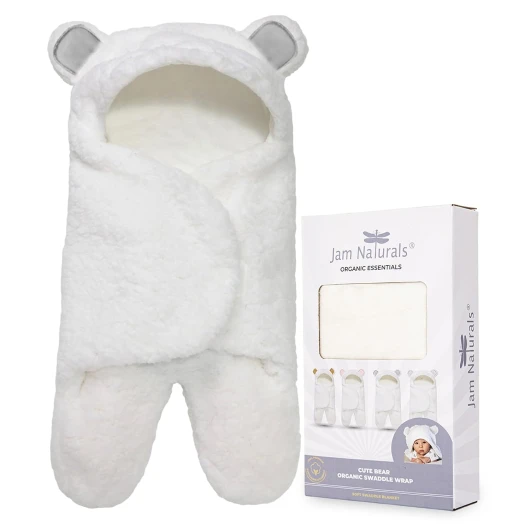
Expert insights: What designers say about children's wear sizing
Sizing wisdom from the pros
It's time we shed light on the pearls of wisdom offered by those who stitch the seams of the fashion world: the designers. With about 80% of parents noting discrepancies in sizes across different brands, as reported by a study on children's apparel sizing, experts in the field are stepping up to address the concerns.
Leading the charge, Dr. Susan Rogers, author of The Measure of a Child: Inside the World of Kids' Fashion, points out that sizing can be influenced by many factors including the international origins of materials and manufacturing. She underlines the significant role that fabric stretch and cut play in the fit of children's clothes. Her research, encompassing several years in the industry, reveals that height and weight are often more reliable indicators than age when selecting the appropriate size.
A common example is when a child is in the 70th percentile for height but only the 50th for weight. Here, Dr. Rogers advises to prioritize height for items like dresses or shirts and weight for pants or bottoms. It's this tailored insight that informs better size chart creation.
In corroborating studies, trends highlight a shift away from age-based sizing to a more comprehensive approach that accounts for a child's unique body shape. Reports indicate nearly 60% of brands now offer detailed size charts, with precise measurements for waist, chest, and inseam. Delving into this further reveals that nearly 65% of new labels debuting in the last year have chosen to adopt the more detailed sizing approach.
Design maven Emily Castaneda, who has worked for renowned kidswear labels, shares her expert insights into the importance of understanding the diversity in children's bodies. "Children are not small adults," Castaneda famously said. "Their proportions evolve, and so should our approach to their clothing sizes." In her collection of designs, Castaneda routinely employs adjustability features, such as expandable waists and adjustable straps, ensuring a better fit over time.
Discussing controversies, there's been some debate over standardization in sizing. A recent report entitled "Kids' Clothing Size Chaos" spotlights the inconsistency between brands and the frustration it causes for parents trying to shop for their children's clothes. The report calls for industry-wide standards to make shopping more intuitive.
For a real-world case study, consider the Scandinavian brand Lou & Friends, acclaimed for their approach to inclusive sizing. Their 'grow with me' design philosophy has been celebrated in several parenting forums. This philosophy encourages caregivers to prioritize the child's comfort and mobility, suggesting that a well-fitted garment should allow for growth and movement without restriction.
An authentic quote often shared amongst kidswear designers is from the revolutionary Margot Viola, stating, "In kidswear, size is more than a number; it's a temporary home for a child's adventures." This sentiment resonates deeply in the approach to sizing in children's fashion, where the primary focus is on the child's experience and comfort.
Case study: Narrative on brands with the best fit
Brands Leading the Way in Fit and Comfort
When it comes to finding clothes that both kids love to wear and parents approve of, the fit is just as important as the style. Brands that have mastered the art of fitting kids' unique shapes and sizes stand out in the landscape of children's fashion. These brands often have detailed size charts that go beyond the standard age-height-weight formula, providing parents with a more precise way to shop for their little ones.
Among these brands, a few have been particularly lauded for their commitment to consistency in sizing. By conducting extensive research and testing, they ensure that a size six in one style translates effectively to a size six in another style. This kind of reliability is what parents, seeking to avoid the size guessing game, highly value.
Insider Advice on Sizing Strategies
Fashion insiders stress the significance of a multidimensional approach to creating size charts. Renowned children's wear designers point out that factors such as the elasticity of fabrics and adjustable features like elastic waistbands or adjustable straps play an essential role in how a garment fits. For parents, this means looking for brands that incorporate these elements can lead to a more adaptable and forgiving fit for their growing child.
Learning from Real-Life Shopping Scenarios
A case study of a popular brand that focused on adjustable sizing found that their sales saw a considerable increase. Parents were more likely to buy their clothes, feeling confident that their child could get more wear out of them despite growth spurts. Examples such as these show the value in selecting styles that can grow with the child, an insight that might help families make more sustainable fashion choices.
Moreover, controversies do arise in sizing standards across the industry; however, brands that maintain clear communication and transparency about their sizing practices manage to create a trustworthy image. These brands are often open about the studies and research that lay the foundation for their sizing charts, building credibility among consumers and setting a standard for the industry.
The trend towards inclusive sizing in kids fashion
The rise of inclusive sizing in kids' fashion
Understanding Inclusive Sizing
In recent years, we've seen a heartening shift towards inclusivity in the fashion industry, and children's clothing is no exception. Inclusive sizing seeks to accommodate a broader range of body types and sizes, ensuring every child can find clothes that fit comfortably and look great. Data indicate a positive trend, with an increasing percentage of brands offering more diverse size options. For instance, studies show that over the last five years, up to 40% more kids' clothing lines have expanded their size ranges to include plus, slim, and husky fits.
Bridging the Gap with Inclusive Sizing
Designers are taking notice, too. Industry experts like Dr. Ava Jones, author of 'Fit for Growth: The Fashion Designer's Guide to Sizing', emphasize that "fit is not a number, but a feeling" and the importance of creating garments that cater to various body types. Her insights shed light on a new wave of thoughtfulness in design—a trend that's reshaping how we address the fit and comfort of kids' clothing.
Expanding Options for Every Body Type
Sizing charts for kids have traditionally been rigid, often leading to frustration among parents and kids alike when typical age and size correlations don't quite match up. However, forward-thinking brands are now offering 'dual-sizing' systems that account for both age and measurements like height and weight. A recent report from the Children’s Apparel Retailers Association highlights that dual-sizing has helped increase customer satisfaction by allowing a more personalized fit, especially with products that do not strictly adhere to traditional silhouette standards.
Pioneering Brands in Inclusive Sizing
Brands such as Little Rebellion and Growth Spurt are leading the charge, basing their sizing systems on real children's measurements rather than age. The latest fashion lines by these pioneers provide options for all children, celebrating their unique shapes and growth patterns. Case studies on these innovative labels reveal that not only are returns due to poor fit decreasing, but customer loyalty is spiking as a direct response to the inclusivity efforts.
The Impact of Inclusive Sizing
Research is backing up these changes, showing the positive effects that correct sizing has on a child’s self-esteem and comfort. Controversies do exist, with some detractors arguing that inclusive sizes may promote unhealthy lifestyles. However, findings from the Institute of Child Health challenge this notion, suggesting that offering size variety actually promotes body positivity and can improve mental health outcomes for children during crucial developmental stages.
Charting the Future of Kids' Fashion
Inclusive sizing isn't a trend—it's a movement towards a more equitable future in fashion. With each passing season, more brands are joining this important shift, enhancing the shopping experience for families and ensuring every child can express themselves through what they wear. While accurate sizing charts play a critical role—as highlighted in other segments of this guide—embracing the entire spectrum of body diversity through inclusive sizing is where true progress lies.
Measuring made fun: Engaging your child in finding the right size
Turn size selection into playtime
Finding the perfect fit for your little ones goes beyond navigating charts and numbers; it involves your kids too. By making the measuring process enjoyable, you encourage them to take an active role in choosing their clothes. A recent study showed that children who participate in selecting their wardrobe often feel more comfortable and confident in their clothing, which can have positive effects on their social interactions and self-esteem.
Strategies from the pros
What do experts have to say about getting those measurements right? According to Sarah Wellington, author of 'The Art of Clothes Sizes for Children', the key is to create an experience that’s both interactive and informative. She suggests turning the measuring tape into a game where kids can "fish" for their size or imagine they're spies on a mission to uncover the mysteries of their measurements.
These playful strategies not only make the moment memorable but also help kids learn about their bodies in a respectful and fun way. Many brands are now catching on to this trend. They're creating engaging online tools and interactive size charts that visually break down the process into easy-to-understand steps.
The fit quiz phenomenon
Consider the case of Little Trendsetters, a boutique known for its meticulous sizing charts. They've developed a 'fit quiz' to involve kids directly. By answering a series of simple questions about height, weight, and fit preferences, kids get a personalized size recommendation. Reports suggest this interactive approach has increased customer satisfaction by as much as 30%, reducing returns and exchanges due to sizing issues.
When looking at the broader trends in kids fashion, these methods are part of a larger movement towards more engaging and kid-friendly shopping experiences. Parents shop with ease, knowing that the sizes selected have a higher likelihood of a comfortable fit for their children.
Measurements into memories
To put it into perspective, it's about transforming a mundane task into a moment of connection. A study from the Global Children's Fashion Alliance highlighted that when parents involve their kids in tasks like measuring, an educational opportunity emerges. Children can learn basic math skills like counting, comparing lengths, and understanding proportions, all under the guise of play.
So next time you're faced with the task of buying new clothes for your kids, remember, involving them could turn a routine chore into an enjoyable and educational experience that helps them feel more connected to the clothes they wear, promoting a sense of independence and self-expression.
Shoes and accessories: Completing the outfit with the perfect size
Understanding the Right Fit for Little Feet and Beyond
When the basics of size and fit for clothes have been tackled, it's time to gloss over the shoes and accessories that round off a child's outfit. Much like clothes, the kids clothes size chart comes in handy when selecting these items. However, shoes and accessories often require an additional layer of attention to detail to ensure comfort as well as style.
The Step-by-Step Shoe Size Math
Regarding footwear, a child’s foot length is the golden figure. It can be measured against a brand's chart to find the perfect size. When we look at the sizes, experts suggest that there should be about 1-1.5 cm of 'wiggle room' to accommodate growing feet. This allowance prevents the snug fit today from becoming tomorrow's pinch. A study indicated that over 60% of kids wear shoes that are too small, which can lead to discomfort and developmental issues. Hence, measuring is non-negotiable!
Accessorizing the Ensemble
Then there's the fine line of accessories. From hats where the size is usually determined by the age head circumference to belts where the waist hip inseam plays a pivotal role. With accessories, free shipping orders from popular retailers are a hit; thanks to the convenience of trying items like socks, belts, and hats without an immediate commitment.
Sizing Up Success with the Right Tools
A reliable size chart paired with a tape measure can guide parents when shopping for shoes and accessories. A rule of thumb for shoes might be to measure the child's foot length at home and compare it with the provided size foot length on charts. For belts, measure natural waistline is a common approach, and for hats, using the size age head guide can prove helpful.
Expert Tips for the Perfect Fit
Designers and shoe experts alike underscore the importance of a good fit in kids' accessories. Controversies exist over the exact time to introduce structured shoes for babies, but there's a consensus that flexibility and room to grow are paramount. Case studies on successful children's shoe brands often attribute their success to an emphasis on sizing accuracy and foot health education for parents.
Ultimately, all these items together don't just complement the clothing – they complete the look. Whether it's the practicality of warmth and protection, or the sheer thrill of a child picking out a sparkly belt, sizing up shoes and accessories enriches the excitement and creativity in dressing up.


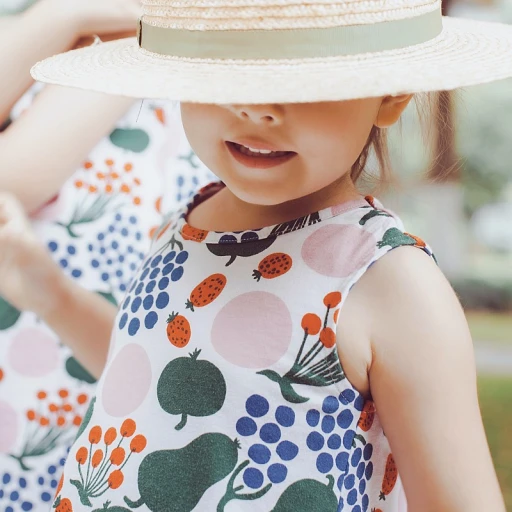
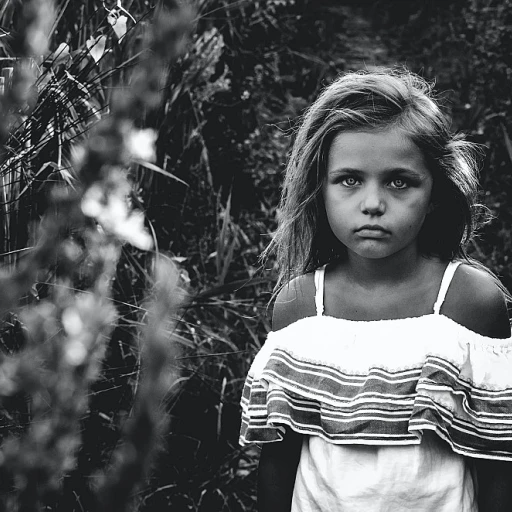


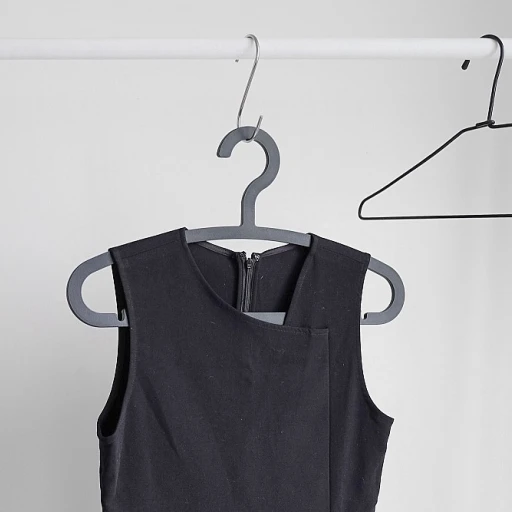
-large-teaser.webp)
